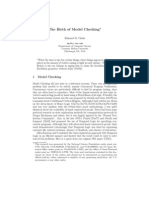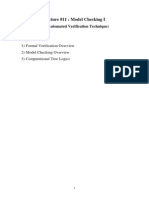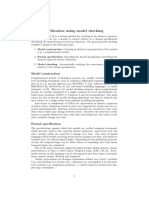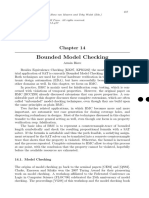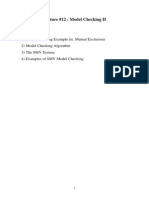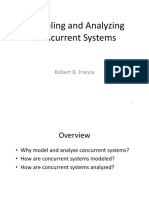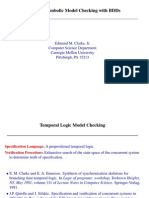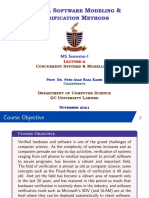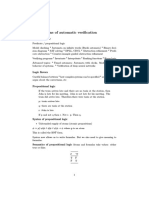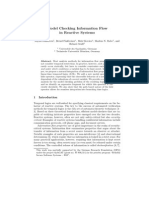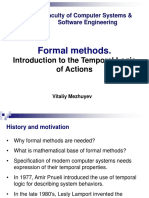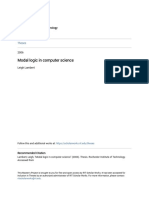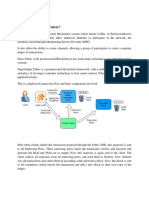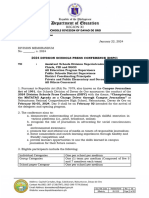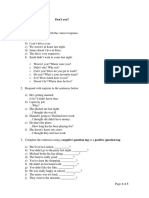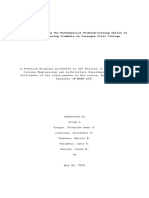0% found this document useful (0 votes)
10 views35 pagesSlides 01
The document introduces formal verification and model checking. It discusses creating formal models of systems and specifying properties to check. Model checking involves checking if a model satisfies a specification using temporal logic to express properties over time. Specifications describe behaviors and can include properties of states and temporal connectives. Non-determinism refers to systems having multiple possible next states from a given state.
Uploaded by
Ulises PaccoCopyright
© © All Rights Reserved
We take content rights seriously. If you suspect this is your content, claim it here.
Available Formats
Download as PDF, TXT or read online on Scribd
0% found this document useful (0 votes)
10 views35 pagesSlides 01
The document introduces formal verification and model checking. It discusses creating formal models of systems and specifying properties to check. Model checking involves checking if a model satisfies a specification using temporal logic to express properties over time. Specifications describe behaviors and can include properties of states and temporal connectives. Non-determinism refers to systems having multiple possible next states from a given state.
Uploaded by
Ulises PaccoCopyright
© © All Rights Reserved
We take content rights seriously. If you suspect this is your content, claim it here.
Available Formats
Download as PDF, TXT or read online on Scribd
/ 35
